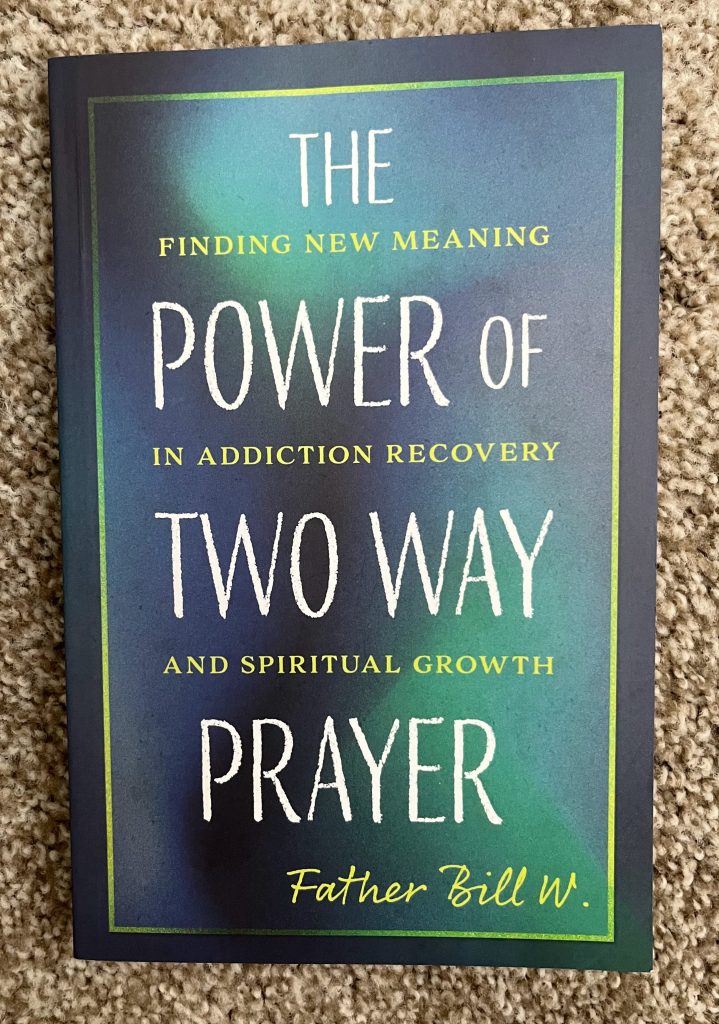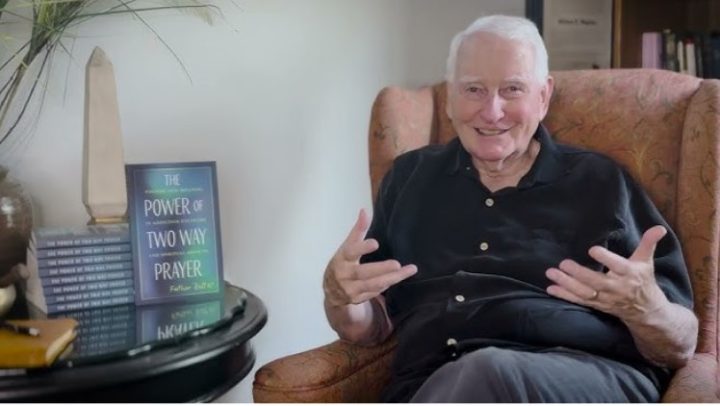A recent article in the New York Times is headlined “Finding God in the App Store.” Apparently, millions are turning to chatbots to seek spiritual advice. “Trained on religious texts, the bots are like on-call priests, imams or rabbis, offering comfort and direction at any time. On some platforms, they even purport to channel God.” Clearly, people are desperate to find someone to whom they can confide their deepest concerns or secrets and from whom they can ask for guidance.
A timely new book by my friend Rev. Bill Wigmore (Father Bill) offers a better alternative: a tried and tested way to connect regularly with the “still, small voice” that resides within us all. The Power of Two Way Prayer: Finding New Meaning in Addiction Recovery and Spiritual Growth (Morehouse Publishing 2025), is a practical and accessible guide for daily life, not just for addicts but for anyone who is facing life’s challenges or seeking ways to chart a new course.
I first got to know Bill in 2009 when he was leading Austin Recovery, the largest addiction recovery center in Texas, based on the principles of Alcoholics Anonymous. He is an Episcopalian priest who for many years has been digging deeply into the history and roots of AA and highlighting some key aspects that have been largely forgotten. He shows that Two Way Prayer was a core part of the original AA program as it developed from the Oxford Group (now Initiatives of Change). Bill Wilson, one of the founders, credits the Oxford Group with 10 of the 12 steps that he and Dr Bob learned from their experience with the group. They were both members of the Oxford Group’s “Alcoholic Squad” when the AA program was taking shape between 1935 and 1939 when the “Big Book” of Alcoholics Anonymous was published.
Bill writes honestly about his own battle with addiction. He was born into an Irish Catholic family. “Nearly every male member was an alcoholic: and the women were as well. Few escaped; most died from it.” He started drinking early. He went from teaching and the Peace Corps, to assisting a Catholic chaplain; he even joined a Jesuit seminary – all while doing his best to hide his addiction. Finally, at the age of 27, he hit bottom. A Jesuit counselor challenged him to look at his addiction honesty and put his life in God’s hands. He encountered the AA12-step program and became sober. But he always felt something was missing.
Then, 20 years after raising a family and becoming an Episcopal priest, he met someone who explained the history of AA, and that listening to and following the inner voice for guidance was the most important factor in sustained recovery. In 1937, J. D. Rockefeller Jr. sent his assistant Frank Amos to Akron, Ohio, to discover why Bill Wilson and Dr Bob’s approach was “changing alcoholics faster than many other attempts.” Amos’ report stated that AA members of that time “did not consider meetings necessary to maintain sobriety. They were simply desirable. Morning devotion and ‘quiet time,’ however, were musts.” Bill Wilson said, “I always felt something was lost from AA when we stopped emphasizing the morning meditation.” Bill Wigmore also notes that the standards of absolute honesty, purity, unselfishness, and love were the cornerstone of early AA. As Dr. Bob said in his last major address, “The Four Absolutes as we called them, were the only yardsticks we had in the early days, before the Steps.”

Father Bill’s book outlines various formats for prayer and listening, and he also highlights the three steps that Jean Brown identifies in her booklet, A Serious Guide to Remaking the World : Connection with the Divine, the Almighty, the Source. This may happen to you through meditation, through the reading of scriptures or other inspirational material, through an encounter with nature, with suffering or joy. Correction of an attitude or relationship, a misunderstanding or a bad habit. This may involve letting go, a moment of liberation as the ego is humbled. Direction from the whisper that reveals the next step, sheds light on the estranged situation, and that gives care for another.
I have found these three steps to be very helpful in my own life and in work on issues of racial healing and community building. (I also highlight them in Trustbuilding: An Honest Conversation on Race, Reconciliation, and Responsibility )
The Power of Two Way Prayer explores some of the spiritual and psychological dimensions of the practice. It notes that Carl Jung played a critical role in AA’s early history. “The practice he developed and called active imagination can help to make Two Way Prayer more acceptable to nonreligious or more scientifically minded readers.” The book includes many stories and examples of individuals practicing Two Way prayer as well as suggested outlines for groups. It also shows how the practice can help to heal deep emotional wounds.
In 2019, Bill met Dr Audrey Hang Hai of Tulane University School of Social Work when she was preparing for her doctoral studies at the University of Texas School of Social Work. She based her dissertation on a study of Two Way Prayer, testing its effectiveness on psychological distress, self-esteem, and spiritual well-being among adults in residential treatment diagnosed with substance abuse disorder. One hundred thirty-four adults in thirty-four residential substance abuse disorder facilities completed the study. The results showed an improvement of more than 20 percent among participants who practiced TWP for two weeks, compared with the control group.
Father Bill has lectured extensively, and has taught as adjunct faculty on addiction and spirituality at the University of Texas School of Social Work, the Episcopal Seminary of the Southwest, and Austin Presbyterian Seminary. He holds online sessions with groups across the country and hosts a podcast . He writes that the “inner voice” seems to go by different names as it speaks to hearts and minds of different people, but amazingly, it always sounds much the same. It’s the Voice of Love wanting and waiting to be heard and followed by whoever may be ready to listen, learn, and obey. As I’ve listened, I’ve been guided in and out of jobs. It guided me to some unfinished business: getting ordained as an Episcopal priest with a ministry to addicts. It even guided me to ask my old Jesuit superior for a letter of recommendation; he wrote to my bishop saying it sounded like Bill had finally grown up.”
